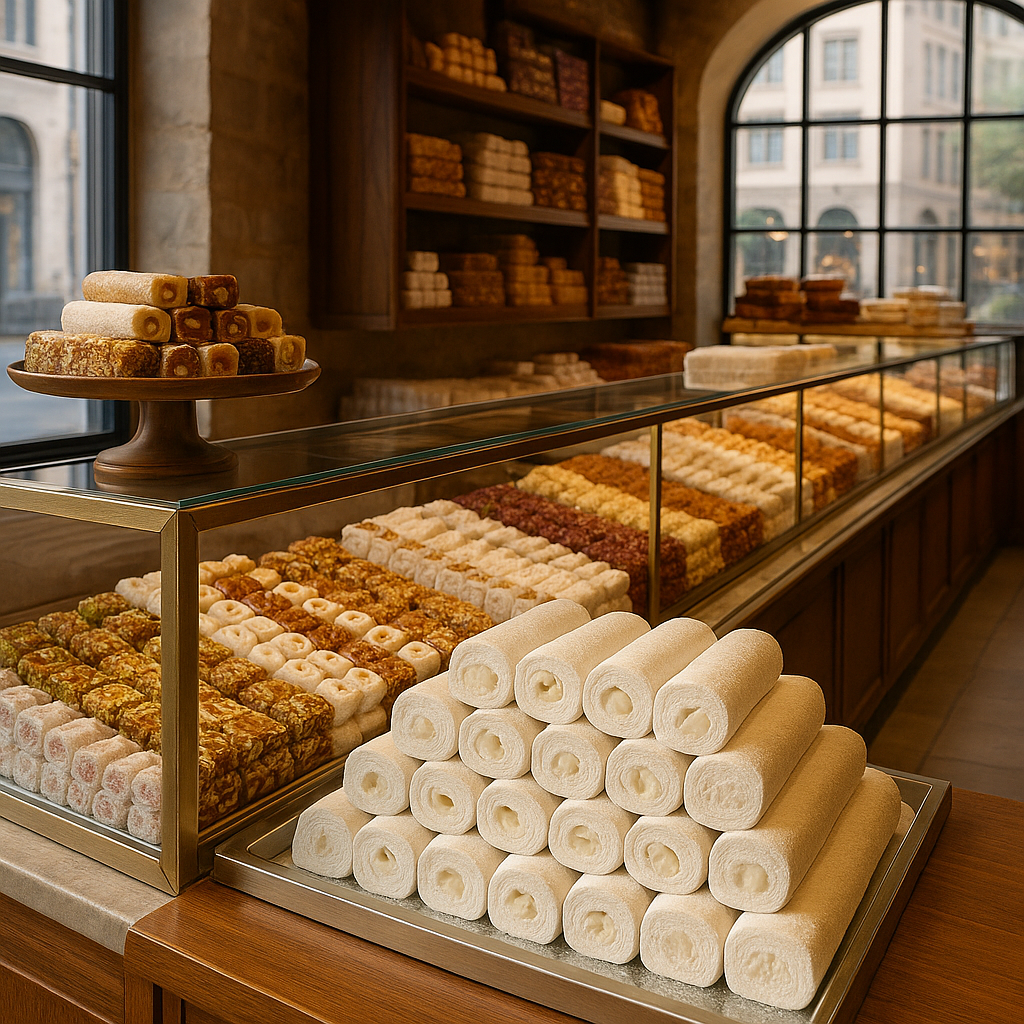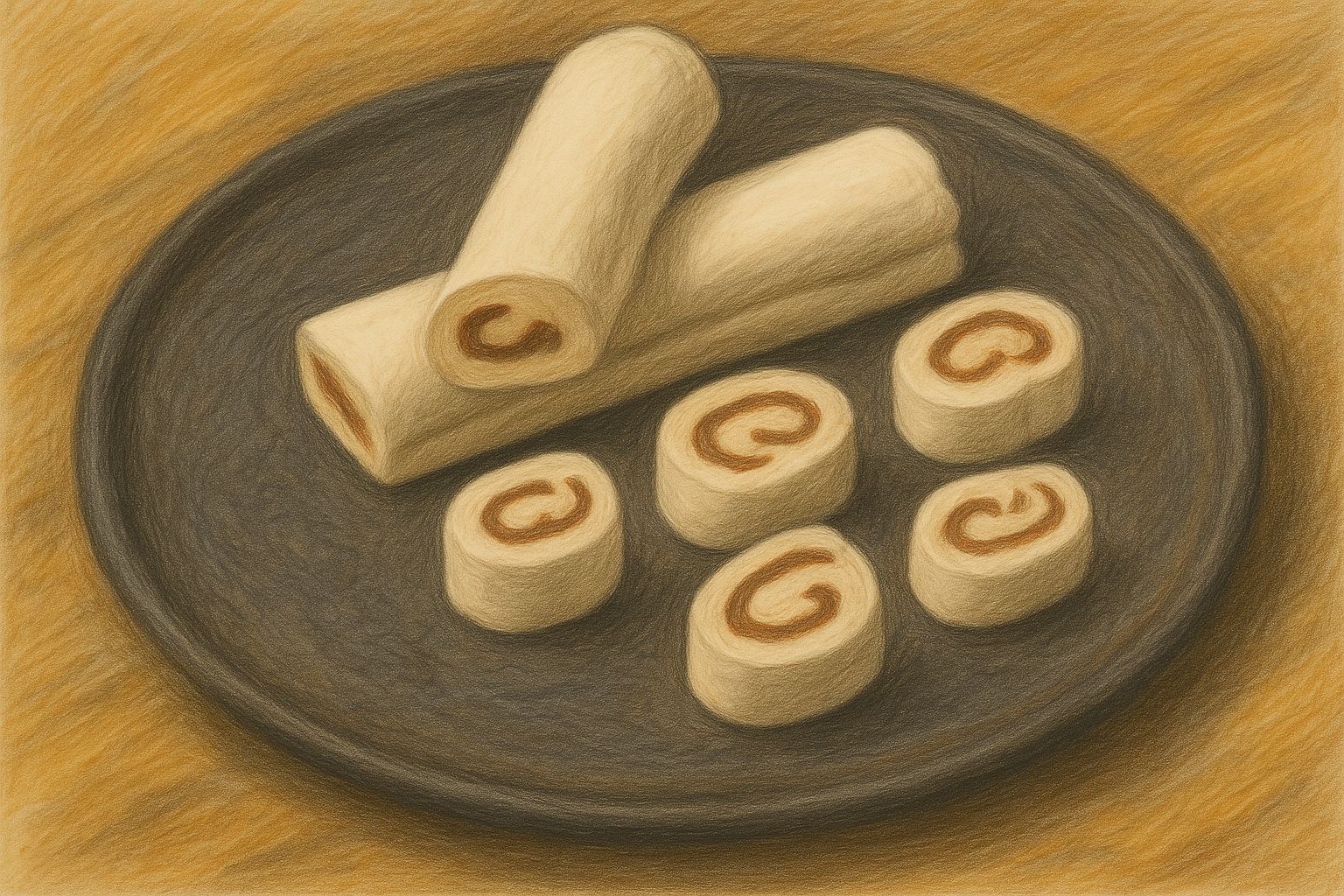Afyon Turkish delight (Afyon lokumu) is a traditional Turkish dessert, geographically indicated and registered, unique to the Afyonkarahisar province of Türkiye. Obtained by cooking high-quality starch, sugar, and water, this product stands out with its soft texture, intense aroma, and ability to maintain freshness for a long time. Produced by adhering to traditional methods, Afyon Turkish delight often meets consumers with plain, rose-flavored, hazelnut, walnut, or pistachio varieties. It is a traditional Turkish confectionery registered as a geographical indication of origin by the Turkish Patent and Trademark Office.
Afyon Turkish Delight (AA)
Geographical Boundary and Reputation Relation
The geographical boundary of Afyon Turkish delight is the Afyonkarahisar province. The product's long history, its traditional offering at celebrations and invitations in Afyon, and the region's location at the intersection of important transportation routes, which led to its widespread recognition, establish a strong reputation link with the region. Due to this reputation link, all production stages of Afyon Turkish delight must take place within the specified geographical boundary.
Historical and Cultural Significance
The history of Afyon Turkish delight dates back to the early 1900s. Afyonkarahisar's central location in Anatolia and its position at the crossroads of trade routes have been instrumental in spreading this delicacy to wide geographies. Turkish delight production, which has been part of the city's trade since the Ottoman period, has become a craft passed down from generation to generation. Being at the intersection of major transportation arteries like Istanbul-Konya and Izmir-Ankara, delight became known to travelers and was transported to different regions.
Afyon Turkish delight has also found its place in the social life of the local people. It has become a part of rituals, offered to guests during marriage proposals, weddings, holidays, special invitations, and celebrations. It is a representative of Turkish culinary culture and one of the sweet symbols of traditional Turkish hospitality. It is also served with Turkish coffee, balancing the coffee's bitter taste. The transfer of production knowledge from generation to generation is important for the preservation of intangible cultural heritage. This knowledge, passed down through master-apprentice relationships, is part of not only technical skill but also life philosophy and cultural identity. Geographical indication registration is an important step for the preservation of this cultural heritage and guarantees traditional production methods and quality standards.
Afyon Turkish Delight (Generated by Artificial Intelligence)
Product Description and Distinguishing Features
The most important feature distinguishing Afyon Turkish delight from other delight varieties is the use of region-specific Afyon clotted cream (kaymak) and cream sugar. These special ingredients give the delight its characteristic creamy texture and unique aroma.
White sugar, natural corn starch, citric acid, and filling materials compliant with the Turkish Food Codex Sugar Communiqué are used. Derivatives such as glucose and cane sugar are absolutely not used. Natural corn starch is preferred because it dissolves easily in cold water, forms an opaque gel, and has high viscosity. Natural corn starch with a high amylose content (50-80%) is preferred in Afyon Turkish delight because it forms white, fast, and strong gels. Citric acid is an auxiliary material used to prevent sugar clumping and for invert sugar formation. Saponaria extract (çöven ekstraktı) is a preferred material to whiten sugar syrup, soften the syrup, and create a spongy, elastic texture with an emulsifying effect, and it is used in the production of sultan-type delight (lokum). Natural water sources unique to the region can also affect the taste of the delight (lokum).
Afyon Turkish delight is produced in 4 different forms: plain/flavored, sultan wrap, rolled delight, and flavored delight/flavored sultan delight.
It may contain various flavors (such as plain, rose, mastic, orange, lemon, chocolate) and filling materials (shelled walnuts, geographically indicated Antep Pistachio, roasted chickpeas (leblebi), peanuts, hazelnuts, coconut, sesame, poppy seeds, fresh or dried fruit confections, coffee, cocoa etc.).
Afyon Turkish delight has a soft but elastic structure. Although its outer surface may be slightly hardened, the inside should remain soft and moist. There should be no cracks on its surface; when cut, it should be transparent, should not spread, and should maintain its elasticity. It should not contain any foreign matter other than what is specified in the recipe. Its texture should not be "kayışlama"; this refers to a dough that is elastic, feels soft/slippery in the mouth, does not break, and does not stick to the palate.
Production Method
The production process of Afyon Turkish delight is a complex operation carried out by adhering to traditional methods. The production technique requires special skill and local mastery. Stages such as the cooking technique, cooking consistency depending on time and temperature, and the order of adding ingredients are important.
- Sugar and water are mixed and boiled. In a separate container, dissolved citric acid and a starch-water mixture are added to the sugar solution, mixed, and boiled. The heat treatment is applied from low to high temperature, reaching a maximum of 120℃ for 1.5 to 2.5 hours.
- During boiling, the delight master controls the consistency of the delight dough by finger, then stops the boiling. The dough not becoming "kayışlama" ensures its elasticity, softness, and transparency.
- The hot delight mass is poured onto counters (usually marble surfaces) coated with natural corn starch to prevent sticking (pasalama). The marble surface prevents the delight dough from sticking and losing its consistency.
- The delight mass is sprinkled with starch and rolled with a rolling pin to a maximum thickness of 1 cm.
- The rolled delight mass is rested (at least 24 hours at room temperature, or a shorter period on the counter).
- For wrap-type delight, the delight mass is cut into strips (bıçkılama), folded inwards into 3 layers, and starch is sprinkled between the layers. Too much starch causes hardening, too little causes sticking. For non-wrap types, only bıçkılama is performed.
- After cutting (e.g., into 45 cm strips), the starch sprinkled during folding is removed with a sweeping brush or by air filtration.
- Desired filling and flavoring materials (clotted cream, pistachio, walnut, etc.) are spread or arranged on the delight strips and rolled (2 or 3 turns), with the end moistened to secure it.
- The rolled delight is coated with shredded pistachio, hazelnut, coconut, sesame, poppy seeds, or other coating materials.
- The delight is placed into transport packaging and cut with scissors or a machine at the cutting counter for sale.
- Packaging and labeling are done in food-contact-appropriate packaging.
Afyon Turkish Delight (Generated by Artificial Intelligence)
Inspection
The compliance of Afyon Turkish delight with its geographical indication registration is inspected by a 3-person audit authority consisting of experts from Afyonkarahisar Municipality, Afyonkarahisar Provincial Directorate of Agriculture and Forestry, and Afyonkarahisar Chamber of Tradesmen and Craftsmen Union, coordinated by Afyonkarahisar Municipality. Inspections are conducted regularly once a year, and also in case of complaints or need. Inspection criteria include the type of sugar and starch used, the use of Afyon clotted cream (kaymak), the input ratios in the production method, and the use of the geographical indication logo/emblem.





